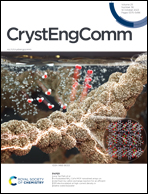Chemical vapour synthesis of carbon nano-onions filled with high-spin ferromagnetic γ-Fe50Ni50 nanocrystals: a structural and magnetic investigation†
Abstract
The recent discovery of an innovative chemical vapour synthesis (CVS) approach for the encapsulation and stabilization of high-spin ferromagnetic γ-Fe nanocrystals inside carbon nano-onions (CNOs) has attracted significant attention. Stabilization of the γ-phase of iron is of particular interest for possible applications in self-regulating hyperthermic dissipative systems, under specific conditions of magnetic tuning. Here, we explore a further modification of the synthesis method, by adding controlled quantities of nickelocene into mixtures of ferrocene, dichlorobenzene and sulfur. In these experiments, sulfur plays a crucial role in stabilizing the face centred cubic (FCC) γ-FeNi phase, up to relative abundances of 94%. The structural and magnetic properties were investigated by employing SEM, TEM, HRTEM, XRD, Rietveld refinements, temperature dependent SQUID magnetometry and T-ESR. The presence of a transition from a high-temperature ferromagnetic state at TC1 ∼ 400 K to a low-temperature disordered frozen magnetic state at TC2 ∼ 60 K is further discussed.



 Please wait while we load your content...
Please wait while we load your content...